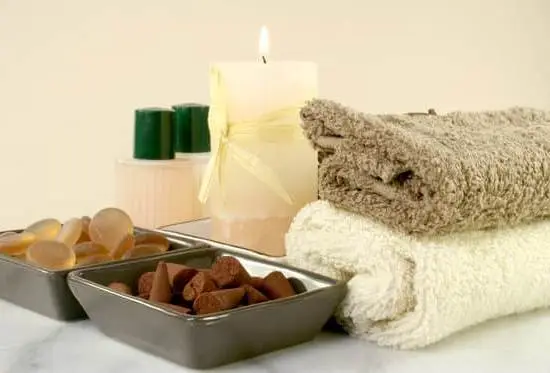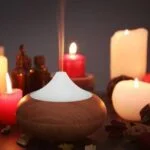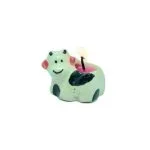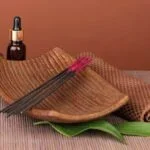Aromatherapy diffusers have become a popular and sought-after tool for creating a relaxing and therapeutic atmosphere at home or in any space. With their ability to disperse essential oils into the air, these devices have gained attention for their potential health benefits and soothing effects on the mind and body.
But how exactly do aromatherapy diffusers work? In this article, we will delve into the science behind these devices, explore different types of diffusers, and provide a step-by-step guide for using them effectively.
In recent years, there has been a rising trend in the use of aromatherapy diffusers as people seek natural remedies to improve their well-being. Whether it’s to relax after a stressful day, promote better sleep, or alleviate symptoms of certain ailments, many individuals are incorporating essential oils into their daily lives. Aromatherapy diffusers play a vital role in this holistic approach by dispersing these oils throughout a space, allowing individuals to experience the therapeutic benefits through inhalation.
To understand how aromatherapy diffusers work, it is important to first trace the origins and evolution of aromatherapy itself. This ancient practice dates back thousands of years, with evidence of its use found in various cultures across the globe.
From traditional rituals to modern wellness practices, aromatherapy has come a long way and is now widely recognized for its potential healing properties. By exploring the history of aromatherapy, we can gain insight into why diffusers have become an essential tool in harnessing its benefits.
Stay tuned as we dive deeper into understanding different types of aromatherapy diffusers, including nebulizing, ultrasonic, and heat diffusers. Each type operates differently and offers unique features that cater to individual preferences. We will explore the mechanisms behind these devices and discuss factors to consider when choosing the right one for your specific needs.
So if you’ve ever wondered about the inner workings of aromatherapy diffusers or are looking to enhance your well-being through the power of essential oils, this article will provide all the information you need. From the technology and science behind these devices to practical tips for using them effectively, we aim to help you embrace the rising trend of aromatherapy diffusers and unlock their potential for holistic wellness.
A Brief History of Aromatherapy
Aromatherapy, the practice of using essential oils for therapeutic purposes, has a rich and fascinating history that dates back thousands of years. The origins of aromatherapy can be traced back to ancient civilizations such as Egypt, China, and India, where aromatic plants and their oils were used for medicinal and religious purposes.
In ancient Egypt, essential oils were highly regarded and used in the embalming process to preserve the bodies of the deceased. They also played a significant role in rituals and ceremonies, with different oils believed to have spiritual and healing properties.
In China, aromatherapy was an integral part of traditional medicine. The use of herbal medicines infused with aromatic plants was prevalent in treating various ailments and promoting overall well-being. Similarly, in India, Ayurvedic medicine embraced the use of essential oils for both physical and emotional healing.
As time progressed, aromatherapy continued to evolve across different cultures. In Europe during the Middle Ages, essential oils gained popularity in treating diseases such as plague and cholera. The advent of distillation techniques further enhanced the extraction of essential oils, making them more accessible for medicinal purposes.
Today, aromatherapy has emerged as a popular alternative therapy worldwide. It is widely recognized for its ability to promote relaxation, reduce stress and anxiety, relieve pain, boost mood, improve sleep quality, enhance cognitive function, and support overall health and well-being. With its ancient roots deeply embedded in human civilization’s history, aromatherapy continues to evolve as scientific research uncovers more about the potential benefits of essential oils.
| Aromatherapy Origins | Significance |
|---|---|
| Egypt | Used in embalming process; spiritual and healing properties. |
| China | Integral part of traditional medicine; used for various ailments. |
| India | Ayurvedic medicine embraced essential oils for physical and emotional healing. |
| Europe | Popular in treating diseases during the Middle Ages. |
Understanding Aromatherapy Diffusers
Types of Aromatherapy Diffusers
Aromatherapy diffusers come in various types, each with its own unique way of dispersing essential oils into the air. One common type is the nebulizing diffuser, which works by breaking down essential oils into tiny particles and then releasing them into the air as a fine mist. This type of diffuser doesn’t require heat or water, making it an ideal choice for preserving the therapeutic properties of the essential oils.
Another popular type of aromatherapy diffuser is the ultrasonic diffuser. This device uses electronic frequencies to create vibrations in a mixture of water and essential oils, producing a cool mist that carries the aroma throughout a room. The ultrasonic vibrations also help to humidify the air, which can be beneficial for those living in dry climates or during winter months when indoor air tends to be dry.
Heat diffusers are another option available in the market. These diffusers use heat to evaporate essential oils and disperse their fragrance into the air. Heat can be applied through methods such as candle flames or electric heating elements, depending on the design of the diffuser. While heat diffusion may alter the chemical composition of some essential oils and reduce their therapeutic benefits, it can still provide a pleasant aroma if used correctly.
Functions of Aromatherapy Diffusers
The primary function of an aromatherapy diffuser is to disperse essential oils into your surroundings so that you can experience their therapeutic effects through inhalation. However, different types of aromatherapy diffusers offer additional functions beyond simply scenting a room.
For instance, some nebulizing diffusers have timer settings that allow you to control how long and how frequently they release mist into the air. This feature can be especially helpful if you want to enjoy aromatherapy while working or sleeping but don’t want continuous diffusion. Ultrasonic diffusers often come with options for setting the mist intensity and the duration of diffusion, giving you more control over the level of scent and humidity in your space.
Additionally, some aromatherapy diffusers may have built-in LED lights that can create a soothing ambiance or act as a nightlight. Certain diffusers also offer sound features, playing relaxing music or nature sounds alongside aromatherapy to enhance relaxation and create a calming atmosphere.
Overall, understanding the different types and functions of aromatherapy diffusers can help you select the one that best suits your needs and preferences. Whether you prioritize strong therapeutic benefits, customizable settings, or additional features like lighting and sound, there is likely a diffuser available that aligns with your specific requirements.
The Science Behind Aromatherapy
Essential oils have been used for centuries in various forms of therapy, including aromatherapy. These oils are extracted from plants and possess unique properties that contribute to their therapeutic benefits. Aromatherapy diffusers are the key tools that allow these essential oils to be released into the air, providing a range of health benefits.
The Chemistry of Essential Oils
Essential oils are highly concentrated plant extracts that contain volatile compounds responsible for their characteristic aroma. These compounds are derived from various parts of plants such as flowers, leaves, bark, and roots through methods such as steam distillation or cold pressing. The chemical composition of essential oils can vary significantly depending on the plant species and extraction method.
The therapeutic benefits of essential oils arise from their complex chemical makeup. Many essential oils contain compounds with antimicrobial, antioxidant, anti-inflammatory, and analgesic properties. For example, lavender essential oil contains linalool and linalyl acetate, which are known for their relaxing and calming effects on the mind and body.
How Aromatherapy Diffusers Work
Aromatherapy diffusers are designed to disperse essential oil molecules into the air, allowing them to be inhaled and absorbed by the body. There are different types of diffusers available including nebulizing diffusers, ultrasonic diffusers, and heat diffusers.
Nebulizing diffusers work by using pressurized air or a pump to break down the essential oil into tiny particles that are then released into the air as a fine mist. This method does not require water or heat but delivers strong concentrations of essential oil for maximum therapeutic benefit.
Ultrasonic diffusers use electronic frequencies to create vibrations in water containing diluted essential oils. These vibrations lead to the production of a fine mist that is released into the air along with the pleasant aroma of the oil.
Heat diffusion involves heating a pad or a bowl containing the essential oil, causing it to evaporate and disperse into the air. This method is commonly used in portable diffusers, but it may alter the chemical composition of the essential oil due to the heat.
How Do Aromatherapy Diffusers Work
Aromatherapy diffusers are devices that are designed to disperse essential oils into the air, allowing users to experience their therapeutic benefits through inhalation. These diffusers work by utilizing various technologies and mechanisms to break down the essential oils into small particles and disperse them throughout the room.
One common type of aromatherapy diffuser is the ultrasonic diffuser. This type of diffuser uses ultrasonic vibrations to create a fine mist of water and essential oil particles. The device contains a small chamber that is filled with water, and a few drops of essential oil are added to the water.
When the diffuser is turned on, it releases ultrasonic waves that cause the water and oil mixture to break apart into tiny droplets that are then dispersed as a mist into the air. This mist not only carries the scent of the essential oil but also allows for easy inhalation.
Another type of aromatherapy diffuser is the nebulizing diffuser. Unlike ultrasonic diffusers, nebulizing diffusers do not require water or heat to operate. Instead, they use an atomizer to convert pure essential oils into a fine mist that can be easily inhaled.
The nebulizing device consists of a glass chamber that is attached to a small pump. When turned on, the pump forces air through a tube and into the glass chamber, creating pressure within it. As this pressure builds up, it agitates the essential oil, causing it to spray out in a micro-fine mist.
Heat diffusers are another popular option for aromatherapy enthusiasts. These devices use heat to warm up a reservoir or pad containing essential oils, causing them to evaporate and release their aroma into the air. Heat can be generated using various methods such as candles, electricity, or light bulbs. Once heated, the essential oils volatilize and their fragrance is dispersed throughout the room.
Exploring Different Types of Aromatherapy Diffusers
Aromatherapy diffusers are available in various types and models, each employing different mechanisms to disperse essential oils into the air. These diffusers not only enhance the ambiance of a space but also offer therapeutic benefits through inhalation of the aromatic molecules. This section will explore three popular types of aromatherapy diffusers: nebulizing, ultrasonic, and heat diffusers.
Nebulizing diffusers are considered one of the most effective methods for dispersing essential oils. They work by breaking down essential oils into microscopic droplets and releasing them into the air as a fine mist.
This type of diffuser does not require water or heat, allowing the full potency and therapeutic properties of the essential oils to be maintained. Nebulizing diffusers often come with adjustable settings to control the intensity and duration of diffusion, making them suitable for both large spaces or small areas such as bedrooms or offices.
Ultrasonic diffusers utilize electronic frequencies to create vibrations that break down essential oils into micro-particles before dispersing them in a fine mist. These diffusers typically combine water with essential oils, creating a soothing atmosphere enhanced by moisture. Ultrasonic diffusers also double as humidifiers, adding moisture back into dry indoor environments.
However, it is important to note that the addition of water may dilute the aroma and therapeutic effects of some essential oils. Nonetheless, ultrasonic diffusers are popular due to their versatility and ability to cover larger areas while providing ambient humidity.
Heat diffusers operate by heating essential oils through various means such as candles, electric plates or bulbs. These devices warm up the oil until it evaporates and fills the room with fragrance. Although heat can alter some chemical components within essential oils, this method is still widely used as it is simple and affordable.
However, heat can diminish the therapeutic benefits of essential oils, making this type of diffuser less effective compared to nebulizing or ultrasonic diffusers. Heat diffusers are often chosen for their simplicity and convenience, especially in smaller spaces or as a portable option for travel.
Choosing the Right Aromatherapy Diffuser for Your Needs
When it comes to choosing the right aromatherapy diffuser for your needs, there are several factors that you should consider. Each type of diffuser has its own unique features and benefits, so taking the time to understand these factors will ensure that you make an informed decision. Here are some key factors to consider when choosing an aromatherapy diffuser:
- Type of Diffuser: There are several different types of aromatherapy diffusers available in the market, including nebulizing, ultrasonic, and heat diffusers. Each type works in a slightly different way and has its own advantages and disadvantages.
For example, nebulizing diffusers use pressurized air to disperse essential oils into the air as a fine mist, while ultrasonic diffusers use vibrations to break down essential oils into microparticles that are then dispersed into the air as a cool mist. Heat diffusers, on the other hand, use heat to evaporate essential oils and release their aroma into the air. - Room Size: Consider the size of the room where you plan to use the aromatherapy diffuser. If you have a small space, such as a bedroom or office cubicle, a smaller diffuser with lower coverage area may be sufficient. On the other hand, if you have a larger living room or open-plan area, you will need a diffuser with higher coverage area or multiple diffusers strategically placed in different corners of the room.
- Run Time: Take note of the run time of each diffuser before making your decision. Some diffusers have shorter run times and may require frequent refills or shut off automatically after a certain period of time. Others may have longer run times and can continuously diffuse essential oils for several hours without interruption. Consider your personal preferences and lifestyle when deciding on a diffuser with a suitable run time.
| Factors to Consider | Description |
|---|---|
| Type of Diffuser | Choose between nebulizing, ultrasonic, or heat diffusers based on their different mechanisms and benefits. |
| Room Size | Determine the coverage area needed based on the size of the room where the diffuser will be used. |
| Run Time | Consider the duration of continuous diffusion before refilling or automatic shut off. |
By considering these factors, you can find the aromatherapy diffuser that best suits your needs and preferences. It is important to choose a diffuser that aligns with your lifestyle and desired therapeutic outcomes.
Whether you are looking for a diffuser with a longer run time for all-day use or a smaller diffuser for personal spaces, there is a wide range of options available to enhance your aromatherapy experience. Take the time to research and compare different models before making your decision and enjoy the benefits of aromatherapy in your daily life.
Step-by-Step Guide
Using and maintaining an aromatherapy diffuser properly is key to achieving optimal results and prolonging the lifespan of your device. Follow this step-by-step guide to ensure that you are getting the most out of your aromatherapy experience:
- Choose the right essential oils: Before using your diffuser, it is important to select high-quality essential oils that are pure and free from synthetic fragrances. Each essential oil has unique therapeutic properties, so choose ones that align with your desired effects. Some popular options include lavender for relaxation, peppermint for energy and focus, and eucalyptus for respiratory support.
- Fill the water reservoir: Most aromatherapy diffusers have a water reservoir that needs to be filled before use. Consult your diffuser’s user manual to determine how much water should be added. It is typically recommended to fill it up to the designated fill line.
- Add essential oils: After filling the water reservoir, add a few drops of your chosen essential oil into the water. Be sure not to exceed the recommended number of drops as this can overwhelm the senses and potentially cause adverse reactions.
- Adjust settings: Depending on your diffuser model, adjust settings such as mist intensity or timer duration according to your preferences. Some diffusers also offer color-changing LED lights for added ambiance. Experiment with different settings until you find what works best for you.
- Turn on the diffuser: Once everything is set up, turn on your aromatherapy diffuser and enjoy the therapeutic fragrance filling your space. Remember to follow any safety guidelines provided by the manufacturer, such as placing the diffuser on a stable surface away from children or pets.
Maintaining Your Aromatherapy Diffuser:
- Clean regularly: To keep your diffuser functioning properly, it is important to clean it regularly, especially if you use different types of essential oils or blends frequently. Consult your user manual for specific cleaning instructions, as they can vary depending on the diffuser model.
- Use a mild cleanser: When cleaning your diffuser, use a mild cleanser, such as dish soap, mixed with warm water. Avoid using harsh chemicals that can damage the diffuser or leave residue.
- Wipe dry after cleaning: After rinsing and cleaning your diffuser, wipe it dry with a soft cloth to prevent any moisture from accumulating in the device.
- Deep clean periodically: In addition to regular cleaning, it is recommended to perform a deep clean of your aromatherapy diffuser every few months. This involves soaking the parts in vinegar or rubbing alcohol to remove any stubborn residue or buildup.
By following these step-by-step instructions for using and maintaining your aromatherapy diffuser, you can ensure that you are getting the most out of your device while keeping it in optimal condition for long-lasting use.
Unlocking the Healing Power of Aromatherapy
Aromatherapy diffusers are a popular means of harnessing the therapeutic benefits of essential oils. These devices effectively disperse the aroma of essential oils into the air, allowing individuals to experience their healing properties through inhalation. The use of aromatherapy diffusers has been highly praised for its numerous potential benefits, but it is important to also be aware of any potential risks associated with their use.
One of the key benefits of aromatherapy diffusers is their ability to promote relaxation and reduce stress levels. Research has shown that certain essential oils, such as lavender and chamomile, have calming effects on the mind and body.
By inhaling these oils through an aromatherapy diffuser, individuals can create a soothing environment that helps relieve anxiety and improve sleep quality. In addition, some essential oils, such as peppermint and eucalyptus, have invigorating properties that can help boost energy levels and enhance focus and mental clarity.
Another potential benefit of using aromatherapy diffusers is their ability to purify the air and eliminate unpleasant odors. Certain essential oils possess antimicrobial properties that can help kill bacteria, viruses, and fungi in the air, reducing the risk of respiratory infections. Additionally, diffusing uplifting scents like citrus or floral oils can create a pleasant ambiance in your home or workspace.
While there are many potential benefits to using aromatherapy diffusers, it is important to be aware of any potential risks associated with their use. Some people may experience allergic reactions or sensitivities to certain essential oils when they are diffused into the air.
It is recommended to always dilute essential oils properly before using them in a diffuser to minimize the risk of skin irritation or respiratory problems. Additionally, it’s crucial to research each specific oil for any contraindications or precautions before diffusion.
Conclusion
In conclusion, aromatherapy diffusers offer a holistic wellness approach that has gained popularity in recent years. These devices have a rich history rooted in ancient medicinal practices and have evolved to become more efficient and effective in delivering the therapeutic benefits of essential oils. By understanding how aromatherapy diffusers work, individuals can make informed decisions about the type of device that best suits their needs.
Different types of aromatherapy diffusers, such as nebulizing, ultrasonic, and heat diffusers, each have their own unique technology and mechanisms. Nebulizing diffusers disperse essential oils into the air as pure droplets, preserving their molecular integrity for maximum therapeutic benefits. Ultrasonic diffusers use vibrations to create a fine mist that carries the essential oil particles, while heat diffusers utilize heat to release the aromatic compounds of essential oils.
Choosing the right aromatherapy diffuser involves considering factors such as ease of use, maintenance requirements, and personal preferences. It is important to follow a step-by-step guide for optimal results in using and maintaining your chosen device. While there are potential risks associated with aromatherapy diffusers such as skin sensitivity or adverse reactions to certain oils, when used properly and responsibly, these devices can unlock the healing power of aromatherapy.
In embracing the holistic wellness approach offered by aromatherapy diffusers, individuals can experience numerous benefits. From relaxation and stress reduction to improved mood and better sleep quality, essential oils have been shown to have positive effects on both physical and mental well-being. By incorporating aromatherapy diffusers into our daily lives, we can enhance our overall health and wellness through the power of scent and natural remedies.
Frequently Asked Questions
How do diffusers make mist?
Diffusers make mist by utilizing a process called nebulization or ultrasonic technology. In nebulization, the diffuser disperses essential oils into the air by breaking them down into tiny particles through vibration or air pressure. This method typically doesn’t require water and produces a more concentrated mist.
On the other hand, ultrasonic diffusers use water to disperse essential oils as a fine mist. The device’s vibrations create ultrasonic waves that agitate the water, causing it to release a mist that includes the essential oil particles. Both methods are effective in releasing the aromatic properties of essential oils into the air for inhalation.
Is diffusing essential oils safe for your lungs?
Diffusing essential oils is generally safe for your lungs when used correctly and in moderation. However, there are a few considerations to keep in mind. First, always use high-quality, pure essential oils from reputable sources to ensure they don’t contain any harmful additives or contaminants.
Second, it’s crucial to follow proper dilution guidelines and avoid using undiluted oils directly in the diffuser as this may lead to irritation or sensitization of the respiratory system. Additionally, if you have pre-existing lung conditions such as asthma or allergies, it’s important to consult with a healthcare professional before using any aromatherapy products.
How do you use aromatherapy diffuser?
Using an aromatherapy diffuser is a straightforward process. First, choose your desired essential oil or blend that suits your needs or preferences. Next, fill your diffuser with water according to its instructions and add a few drops of the selected essential oil(s) based on your personal preference or the manufacturer’s recommendations – usually 5-10 drops per 100ml of water is sufficient.
Then, place the diffuser in an appropriate location within reach of an electrical outlet and switch it on following its specific operating instructions. Some models may offer additional features like timers or lighting options which can be adjusted accordingly. Lastly, sit back and enjoy as the diffuser disperses a gentle mist carrying the aroma and potential therapeutic benefits of the essential oils into your living space.

Are you looking for a natural way to improve your health and wellbeing?
If so, aromatherapy may be the answer for you.






